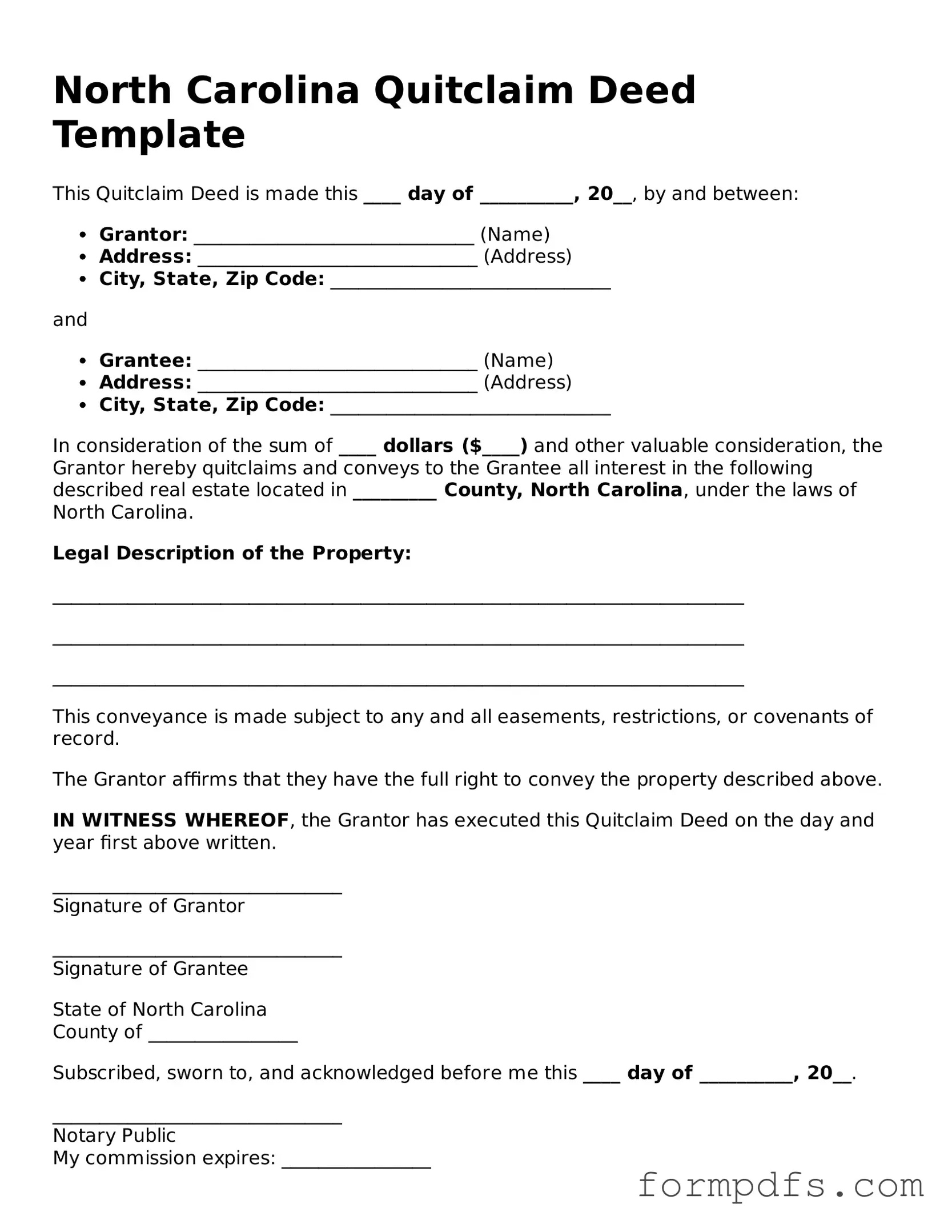What is a Quitclaim Deed?
A Quitclaim Deed is a legal document used to transfer ownership of real property from one party to another without any warranties or guarantees. The person transferring the property, known as the grantor, relinquishes any claim they may have to the property. The recipient, or grantee, receives whatever interest the grantor has, if any. This type of deed is often used in situations such as divorce settlements or transferring property between family members.
How do I complete a Quitclaim Deed in North Carolina?
To complete a Quitclaim Deed in North Carolina, you will need to gather specific information, including the names and addresses of both the grantor and grantee, a description of the property, and the date of transfer. The form must be signed by the grantor in the presence of a notary public. After signing, the deed should be filed with the local county register of deeds to ensure it is recorded and becomes part of the public record.
Is a Quitclaim Deed the same as a Warranty Deed?
No, a Quitclaim Deed is not the same as a Warranty Deed. A Warranty Deed provides a guarantee that the grantor holds clear title to the property and has the legal right to transfer it. In contrast, a Quitclaim Deed offers no such assurances. The grantee accepts the property "as is," which means they may inherit any existing liens or claims against the property.
When should I use a Quitclaim Deed?
Quitclaim Deeds are commonly used in specific situations, such as transferring property between family members, adding or removing a spouse from the title after marriage or divorce, or clearing up title issues. They are also used in situations where the parties know each other well and trust that the transfer is legitimate. However, they are not advisable for transactions involving strangers or when a warranty of title is required.
Are there any tax implications when using a Quitclaim Deed?
While transferring property via a Quitclaim Deed generally does not trigger a tax event, it is important to consult with a tax professional. Depending on the circumstances, such as the property's value and the relationship between the parties, there may be tax implications, including potential gift taxes. Each situation can vary, so professional advice is recommended.
Can I revoke a Quitclaim Deed after it has been executed?
Once a Quitclaim Deed has been executed and recorded, it cannot be revoked unilaterally. However, the parties involved may choose to execute a new deed to reverse the transaction or transfer the property back. This would require the same formalities as the original deed, including signatures and notarization.
Where can I obtain a Quitclaim Deed form in North Carolina?
Quitclaim Deed forms can be obtained from various sources, including online legal form providers, local county clerk offices, or legal stationery stores. It is important to ensure that the form used complies with North Carolina state laws. Consulting with an attorney may also be beneficial to ensure that the deed is properly completed and executed.
